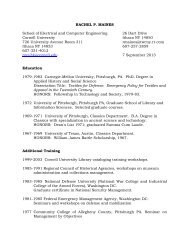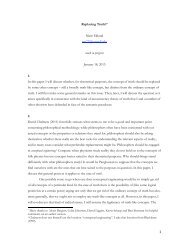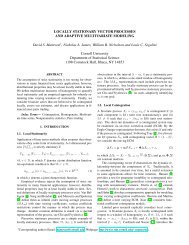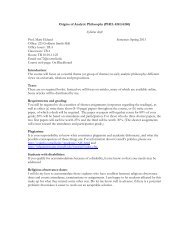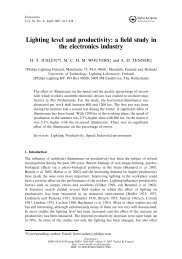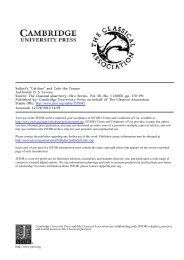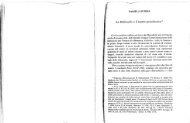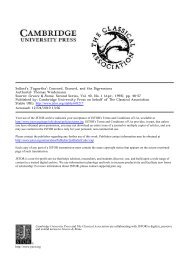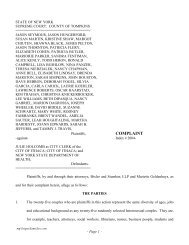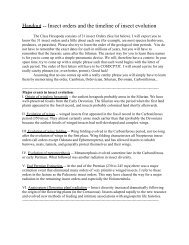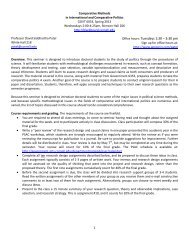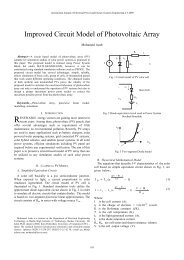Chapter 1 Review of Basic Semiconductor Physics - courses.cit ...
Chapter 1 Review of Basic Semiconductor Physics - courses.cit ...
Chapter 1 Review of Basic Semiconductor Physics - courses.cit ...
You also want an ePaper? Increase the reach of your titles
YUMPU automatically turns print PDFs into web optimized ePapers that Google loves.
<strong>Semiconductor</strong> Optoelectronics (Farhan Rana, Cornell University)<br />
(conduction band minimum is at the X point and valence band maximum is at the point). The Alloy<br />
AlxGa1 x As must therefore be direct gap for small values <strong>of</strong> x and indirect gap for large values <strong>of</strong> x. At<br />
some value <strong>of</strong> x the transition from direct to indirect gap occurs. This is shown in the Figure. For the<br />
effective masses, the linear rule works better if the inverse effective masses are averaged, and provided<br />
the effective masses refer to the same point in k-space in the FBZ. For Eeample, the electron effective<br />
mass m e in As In Gax 1- x is,<br />
1<br />
x 1<br />
x<br />
<br />
<br />
meGaxIn1-<br />
xAs<br />
me<br />
GaAs me<br />
InAs Here, all effective masses are at the point in the conduction band. For the dielectric constants, and<br />
refractive indices, the linear rule can be hopelessly wrong, especially if the wavelength at which these are<br />
desired is close to the bandgap <strong>of</strong> any one <strong>of</strong> the constituents in the alloy. As the course proceeds we will<br />
consider many different examples.<br />
1.6 Density <strong>of</strong> States in Energy<br />
We know that the number <strong>of</strong> allowed energy states in volume d k<br />
<br />
3<br />
<strong>of</strong> the reciprocal space is<br />
2 V<br />
3<br />
d k<br />
3 2<br />
in one energy band. Suppose we want to find out the number <strong>of</strong> allowed energy states in an interval dE<br />
<strong>of</strong> energy in a band. Suppose a simple isotropic, parabolic conduction band with energy dispersion given<br />
by,<br />
2 2<br />
k 2<br />
k E kkk E c<br />
2me<br />
The equal energy surfaces in reciprocal space or k-space are spherical shells (i.e. all states on a shell have<br />
E vs k relation is isotropic). Suppose the thickness <strong>of</strong> the shell is dk . Then<br />
the number <strong>of</strong> states in the shell <strong>of</strong> radius k is,<br />
dk<br />
2<br />
4<br />
k<br />
2 V <br />
3<br />
2<br />
Since,<br />
the same energy since the k


